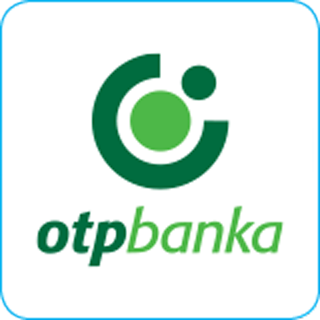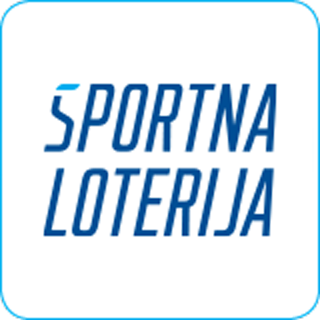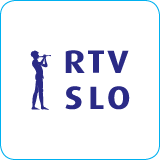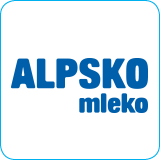Slovenian Olympic Marketing
With the signing of the Olympic Charter on October 15, 1991 and on the basis of full recognition of NOC SLO by IOC (5 February 1992), the NOC SLO started acquiring funds from the government, thus starting Olympic marketing in Slovenia.
From the beginning NOC SLO followed the guidelines that the IOC dictated. The first Olympic sponsorship contracts were signed on 6 July 1992 in Maribor at the first Olympic run. The first sponsors were the Istrabenz from Koper and Intereuropa Koper. Seven other major Slovene companies soon joined them; in the following year, the sponsorship of the Olympic family increased by six members, and the main sponsor became the SKB bank, who also supports Slovene Olympians today. By signing the contracts, they joined the NOC SLO Marketing Club, which was founded on May 6, 1993.
The main tasks of the previous marketing department were:
Since 1998, because of the sponsors’ initiative more attention has been devoted to the creation of a long-term and optimal marketing program, which enables business partners who cooperate with the NOC SLO to reimburse invested funds according to individually optimized cooperation programs.
With its activities, the marketing department also contributed to raising the image of Olympism and its visibility in Slovenian public, as well as the recognition of companies supporting the Olympic movement. And these tasks are still the most important tasks of the marketing activity of the NOC SLO. They strive for excellence, partnership and friendship.
With the Olympic cycle Beijing 2008 - London 2012, the sponsors are no longer divided into two categories, but into three: the main sponsor, the big sponsor and the sponsor of the Olympic team of Slovenia. In the Olympic cycle Rio 2016, Tokyo 2020, the sponsors have been renamed from sponsors of the Olympic team of Slovenia to sponsors of the Olympic Games, covering all areas of the Olympic Games, from top sport to sports for all, local sports and the Slovenian Olympic Academy.
From the beginning NOC SLO followed the guidelines that the IOC dictated. The first Olympic sponsorship contracts were signed on 6 July 1992 in Maribor at the first Olympic run. The first sponsors were the Istrabenz from Koper and Intereuropa Koper. Seven other major Slovene companies soon joined them; in the following year, the sponsorship of the Olympic family increased by six members, and the main sponsor became the SKB bank, who also supports Slovene Olympians today. By signing the contracts, they joined the NOC SLO Marketing Club, which was founded on May 6, 1993.
The main tasks of the previous marketing department were:
- The collection of financial and material resources for the implementation of sports programs related to preparations and appearances at the Olympic Games and at competitions organized by the IOC,
- Over time, the focus of marketing activities has also been directed to the federations of members of NOC SLO, and NOC SLO together with their business partners, helped lower the costs of their operations and create optimal conditions for training athletes.
Since 1998, because of the sponsors’ initiative more attention has been devoted to the creation of a long-term and optimal marketing program, which enables business partners who cooperate with the NOC SLO to reimburse invested funds according to individually optimized cooperation programs.
With its activities, the marketing department also contributed to raising the image of Olympism and its visibility in Slovenian public, as well as the recognition of companies supporting the Olympic movement. And these tasks are still the most important tasks of the marketing activity of the NOC SLO. They strive for excellence, partnership and friendship.
With the Olympic cycle Beijing 2008 - London 2012, the sponsors are no longer divided into two categories, but into three: the main sponsor, the big sponsor and the sponsor of the Olympic team of Slovenia. In the Olympic cycle Rio 2016, Tokyo 2020, the sponsors have been renamed from sponsors of the Olympic team of Slovenia to sponsors of the Olympic Games, covering all areas of the Olympic Games, from top sport to sports for all, local sports and the Slovenian Olympic Academy.
International Olympic Marketing
The Olympic Movement has a rich and long history. From the original games in ancient Greece to the recent Olympic Games in Vancouver, the Olympic movement has gained a new dimension. Sport has become one of the largest "industries" in the world and companies are investing increasing amounts of money into it.
The Olympic Movement has developed a set of valuable rights and benefits that can be used very effectively by companies with appropriate marketing policies. Over the past ten years, the marketing revenue has risen sharply and has exceeded $ 3.5 billion in the last Olympic cycle (4 years).
The sports marketing of the Olympic Movement includes all aspects of revenue:
From 1894 to the present, 48 Olympic Games have been organized, where we can observe the development stages of marketing (The Olympic Marketing Guide, 1999, pp. 3.24-3.30):
2. The proportion of resources by type of income through the development of Olympic marketing
In 1980, television rights were the main source of income (95%), 84% of the funds collected from television rights came from rights acquired in the United States. It was necessary to find new resources and prevent the dependence of income on the USA.
In spite of the fact that the revenue that came from the USA between 1997 and 2000 was 8 times higher than in 1980, it accounted for only 53% of the collected funds from television rights. The number of countries that had the television rights to transfer the Olympic Games rose from 111 to 220 (3.7 billion viewers worldwide), while the 500 hours of transmission in 1980 increased to 3,800 hours in 2000, with the total revenue rising more than fifteen times - from $ 122 million to $ 1,845 million over a four-year period.
The Olympic market focused on several sources of income:
The Olympic Movement has developed a set of valuable rights and benefits that can be used very effectively by companies with appropriate marketing policies. Over the past ten years, the marketing revenue has risen sharply and has exceeded $ 3.5 billion in the last Olympic cycle (4 years).
The sports marketing of the Olympic Movement includes all aspects of revenue:
- The sale of television rights,
- Sponsorship,
- The sale of tickets and
- The licensed sales of products with an Olympic sign.
- The habits of people striving for a healthy lifestyle; Sports and sports marketing are becoming increasingly important in their leisure time,
- The development and distribution of media has enabled keeping-up with sporting events,
- Companies that have become aware of the importance of sport, have adjusted the distribution of funds for marketing, advertising and promotion, and are increasingly focusing on sports events.
From 1894 to the present, 48 Olympic Games have been organized, where we can observe the development stages of marketing (The Olympic Marketing Guide, 1999, pp. 3.24-3.30):
- Athens 1896: the first Olympic Games of the modern age were organized in 1896 in Athens, where 245 athletes from 14 countries took part; they were financed with the help of the wealthy Greek Averoff.
- Stockholm 1912: About 10 Swedish companies bought the rights to photograph the Games, one company even bought the right to install weight lifting tools.
- Antwerp 1920: Advertising during the official program.
- Paris 1924: for the first and last time, advertising was allowed at the venue (venue advertising).
- Amsterdam 1928: Coca Cola starts supporting the Olympic movement and has been supporting it until today, which places it at the top of the TOP Partners' Loyalty Campaign; advertising was allowed during the official program, but not at the competition.
- Los Angeles 1932: The first Olympic Games that were profitable. After the Games, the Olympic Village was sold for the purposes of touristic facilities and construction companies.
- Berlin 1936: the first televised transfer of the Olympic Games, but only for the surroundings of Berlin (only one of the three cameras allowed live broadcast, even this depended on the light); a total of 138 hours of transmission was watched by 162,000 viewers; the start of carrying the Olympic torch.
- London 1948: The first payment for transmission rights, the BBC pays $3,000 and IOC sets up the principle of paying for TV rights.
- Helsinki 1952: Selling the right to sell various products at the site of the Olympic Games.
- Cortina 1956: the first transfer of the live Winter Olympics.
- 1958: They add to the charter that the Organizing Committee of the Olympic Games with the approval of the IOC has the right to sell the rights of television broadcasting, the revenue of which is distributed in accordance with its rules.
- Rome 1960: the first televised broadcast of the Olympic Games was live in 18 European countries and only a few hours later in the US, Canada and Japan; The organizing committee cooperated with as many as 46 companies.
- Tokyo 1964: the number of participating companies rose to 250; a new brand of cigarettes "Olympia" earned one million US dollars; Television broadcasts are already global and have satellite coverage.
- 1966: The IOC extends the distribution of the profits onto the National Olympic Committees and Sports Associations.
- Mexico 1968: the first color transfers of the Olympic Games with the possibility of slow motion recordings.
- Munich 1972: a private advertising agency acts as a licensing agent; selling the rights to use the official logo; for the first time, the official mascot "Waldi" appears, and mascot sales companies pay royalties.
- Montreal 1976: 628 sponsors and suppliers support the Olympic Games, the revenue of the Organizing Committee amounts to seven million US Dollars.
2. The proportion of resources by type of income through the development of Olympic marketing
In 1980, television rights were the main source of income (95%), 84% of the funds collected from television rights came from rights acquired in the United States. It was necessary to find new resources and prevent the dependence of income on the USA.
In spite of the fact that the revenue that came from the USA between 1997 and 2000 was 8 times higher than in 1980, it accounted for only 53% of the collected funds from television rights. The number of countries that had the television rights to transfer the Olympic Games rose from 111 to 220 (3.7 billion viewers worldwide), while the 500 hours of transmission in 1980 increased to 3,800 hours in 2000, with the total revenue rising more than fifteen times - from $ 122 million to $ 1,845 million over a four-year period.
The Olympic market focused on several sources of income:
- Television rights (still account for the largest share - 50%),
- Revenues from sponsors ($ 550 million),
- The income from the sale of tickets ($ 625 million in 2000 for the Summer Olympics),
- The funds from Olympic solidarity ($ 210 million) and
- Selling coins and licenses.
















